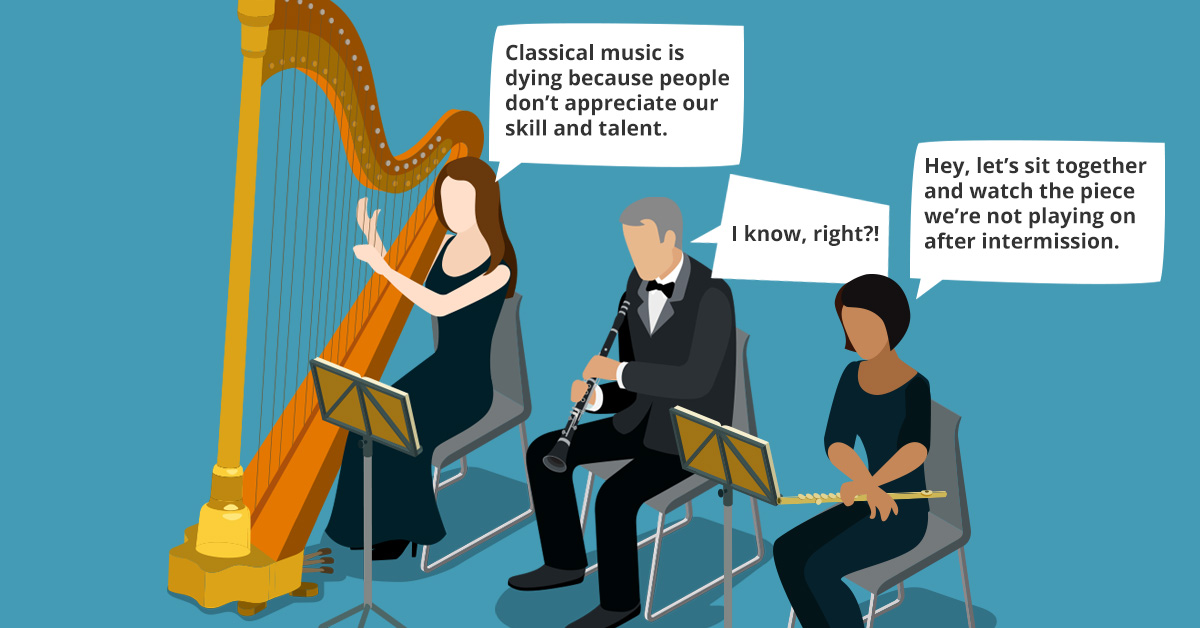Two items that came out of last Sunday’s Academy Awards caught my attention in how they intersect with the orchestra field: equal pay for equal work and inclusion riders.
Equal Pay and Equal Representation
 The pay discrepancy between Mark Wahlberg and Michelle Williams for reshoots on the film “All the Money in the World” made headlines when it became public that Wahlberg was paid $1.5 million while Williams only earned an $80 per diem.
The pay discrepancy between Mark Wahlberg and Michelle Williams for reshoots on the film “All the Money in the World” made headlines when it became public that Wahlberg was paid $1.5 million while Williams only earned an $80 per diem.
The real kick in the pants is that both actors are represented by the same agency.
When news of the pay discrepancy broke, my first thought was whether the divergence was the result of one manager being far better than the other when it came to negotiating terms. Even if that were the case, it falls to the one paying the bills to avoid such an ostentatious discrepancy.
Short of a most favored nations clause (if one person gets it, everyone else in the same employment tier gets it) regulated via intense transparency, a system of equality-based compensation relies entirely on the people endowed with making the decisions.
If nothing else, it does make me wonder if such profound pay differences exist inside the classical music field. I can say from first hand experience, I haven’t seen anything so egregious with agreements I’ve helped negotiate but it would still be entirely fascinating to conduct a broader examination.
Do women conductors earn less than male counterparts? There isn’t much evidence to support that among those with music director positions, but data isn’t as readily available when it comes to guest conducting fees.
How about soloists? Do orchestras pay Anne-Sophie Mutter ≈ same solo fee as Gil Shaham for the same repertoire?
Inclusion Riders
This one really caught my attention.
It’s a relatively new concept pioneered in the motion picture industry that dictates the non-principal cast members in a film need to reflect the demographics of the real-life location. The goal is to oblige productions to cast proportionally to accurately reflect ratios of men, women, minorities, LGBTQ, people with disabilities, etc.
Imagine something similar being applied to our field for onstage and guest artist hiring.
Really think about that for a moment.
My hunch is if you’re an insider, you’ve probably come up with half a dozen (or more) reasons why it just couldn’t, or shouldn’t, happen.
If so, consider this.
One of my pet projects over the past half dozen years has been sowing the seeds of an idea not unlike inclusion riders for musician and guest artist hires.
For example, something like Hollywood’s inclusion rider applied to the Pittsburgh Symphony would designate ≈ 25 percent of the non-principal musician complement should be African American.
While no one would expect an orchestra to simply clean house in order to make room for those hires, there’s nothing preventing them from working toward that goal using attrition.
Whenever I take the idea out for a stroll, it invariably gets slapped down by the full spectrum of stakeholders. Most executives, board members, current musicians, conductors, etc. loathe the idea. But most isn’t the same as all.
Having said that, the bulk of reticence arrives by way of artistic quality control.
“We need to be able to only hire the best, regardless of sex, race, age, or sexual orientation.”
While that’s an undeniably crucial foundation for artistic hiring thresholds, I have yet to hear why that would preclude any sort of inclusive hiring practices.
Currently, if an orchestra holds an audition and fails to identify a suitable candidate, it’s a no-win result. The next step is to hold another audition. There are numerous instances where this process cycles for years before a candidate wins the audition.
Consequently, why would any orchestra stakeholder expect to use lower artistic standards when hiring minority musicians is a mystery. Yet that assumption is one of the most common responses I encounter.
Orchestras can still hold blind auditions and use the same artistic benchmarks. In short, absolutely nothing about the existing audition process would need to be modified to accommodate inclusion-based hiring.
If the prospect of taking five or more years to fill several vacancies is unpalpable, then that’s a terrific reason to take a more active role in helping to increase the numbers of high quality minority candidates.
Win=win.


